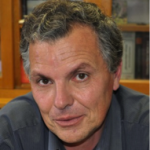Lien vers Pubmed [PMID] – 28333259
Lien DOI – 10.1093/jac/dkx045
J Antimicrob Chemother 2017 Jun; 72(6): 1784-1793
Using registry data to compare fungaemia caused by uncommon yeast species (UYS; i.e. other than Candida albicans , Candida glabrata , Candida parapsilosis , Candida tropicalis and Candida krusei ) and C. albicans -related fungaemia can reveal specific predisposing factors of UYS with potential impact on treatment strategies.We analysed 338 episodes of UYS fungaemia prospectively collected from 27 hospitals (Paris, France; 1 October 2002-31 December 2014) and compared these with 1998 single episodes of C. albicans fungaemia using univariate and multivariate analyses.The proportion of UYS fungaemia was stable over time. Thirty-five different species were identified (27 ascomycetes, 8 basidiomycetes), 11 had caspofungin MIC 50 >0.25 mg/L and 15 fluconazole MIC 50 >4 mg/L. Haematological malignancies [OR=2.39 (95% CI 1.79-3.18)] and prior exposure to antifungal drugs [OR=1.87 (1.30-2.69)] were independent predisposing factors for UYS infections upon multivariate analysis. However, when considering the genus/species complex level, only infections due to Candida kefyr -related species [OR=4.01 (2.42-6.64)] and to Trichosporon spp. [OR=5.38 (1.72-16.81)] remained associated with haematological malignancies, those due to the GEOTRICHUM group with acute leukaemia [OR=61.29 (19.23-195.36)], and infections with Trichosporon spp. or the GEOTRICHUM group with prior exposure to caspofungin [OR=15.67 (3.62-67.80) and OR=13.17 (3.33-52.03), respectively] but not to fluconazole. The global mortality at day 30 for UYS was similar to that for C. albicans (35.4%, and 39.9%, respectively), but very divergent results were observed according to the specific UYS.UYS encompass a high diversity of species, each with its own behaviour and predisposing factors for human infections. This variety makes it important to rapidly identify an isolate to the species level in order to optimize antifungal treatment.







